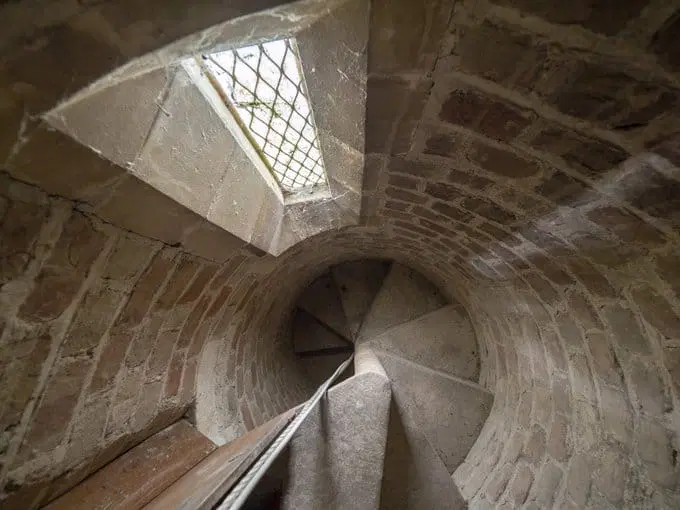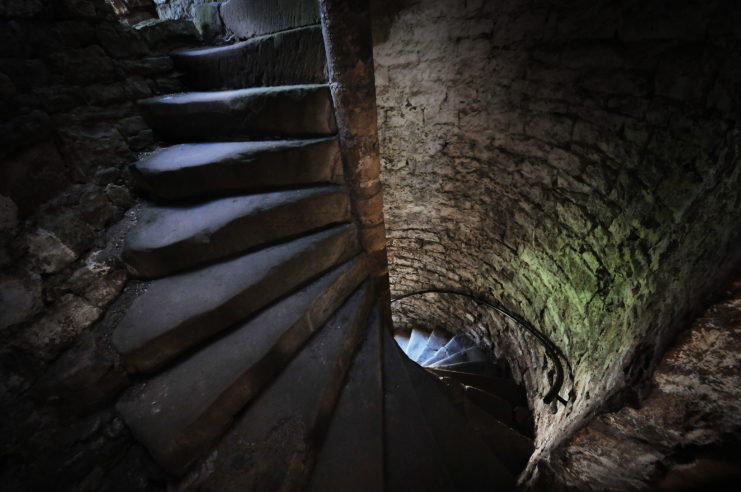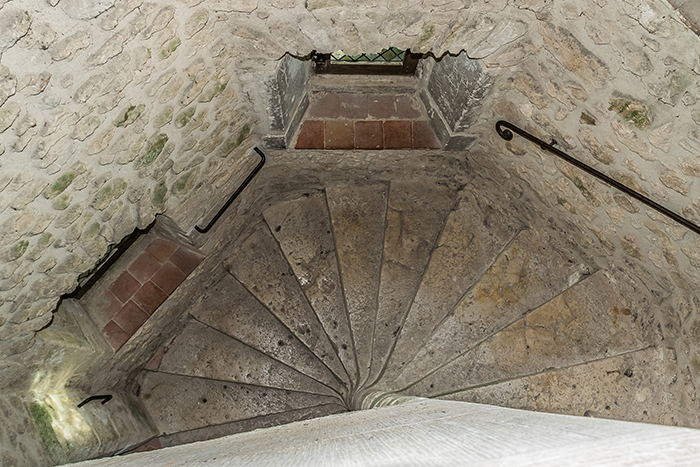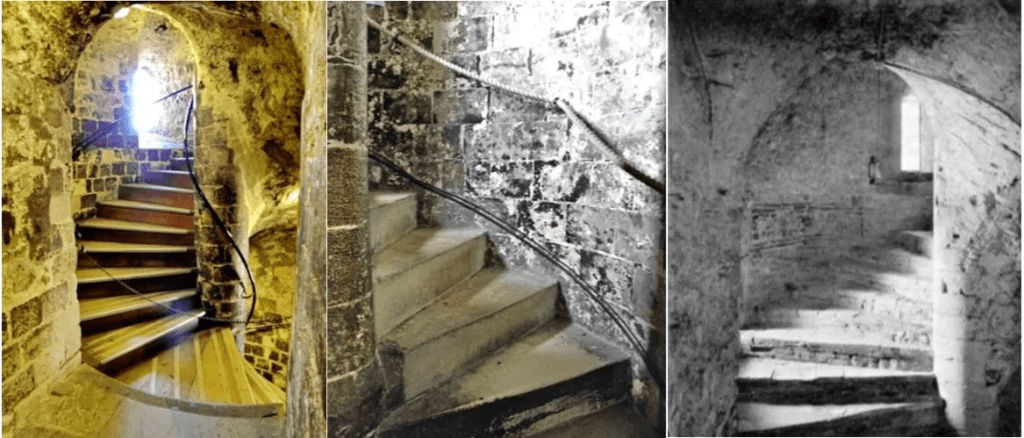More Than Stone and Mortar
When we think of medieval castles, we picture towering walls, drawbridges, moats, and massive gates. But one of the most overlooked and ingenious features lies not outside, but within: the castle staircase. Far from being just a means of moving between floors, these staircases were carefully crafted defensive tools, built to confuse attackers, protect defenders, and even decide the fate of an entire stronghold.
In the age of swords and sieges, every inch of a castle was designed with survival in mind including the stairs beneath your feet.

Irregular Steps and Spiral Strategy
At first glance, a medieval castle’s spiral staircase may seem quaint or quirky. But its tight, twisting design was far from accidental. Most castle staircases spiraled clockwise upward a subtle but strategic choice. Why?

Because the majority of knights were right-handed. When attackers stormed a staircase from below, the spiral’s direction would cramp their sword arm, limiting their ability to swing effectively. In contrast, defenders descending the staircase had the wall to their back and a wide arc to swing their swords freely with their dominant hand.
The staircase’s narrowness also ensured that only one attacker could ascend at a time, effectively turning the stairwell into a bottleneck that favored the defender. In a siege, this often meant the difference between holding a castle or losing it.
Video:
Why Do Castles Have Narrow Spiral Staircases?
Built-In Traps and Uneven Steps
Castle architects were not content with just a spiral layout they often added uneven step heights or slippery surfaces to increase confusion. For someone unfamiliar with the staircase, this could lead to stumbles, slowed progress, or fatal mistakes. Defenders, familiar with their home’s layout, had the upper hand.
Some staircases also had hidden niches or vertical slits in the wall called arrow loops or loopholes. These allowed archers or crossbowmen to shoot at intruders climbing the stairs without exposing themselves to return fire. In effect, the staircase became a trap disguised as a passageway.

Architecture as Warfare
Castles were fortresses, but they were also psychological battlegrounds. Knowing that even the stairs worked against them could demoralize attackers. In some castles, stairwells were built deliberately confusing with sudden turns, dead ends, or split levels to disorient invaders even more.
Even the direction of doors and the placement of murder holes small openings in ceilings used to pour boiling oil or drop stones was coordinated with stair design. A well-planned staircase wasn’t just defensive; it was offensive architecture.

Designs That Endured for Centuries
This clever use of space wasn’t just limited to Europe. Similar tactics were seen in Middle Eastern and Asian fortresses, though adapted to local warfare styles. In Japan, for example, some castles used narrow wooden stairs with steep risers to slow enemy movement and prevent the swift advance of troops indoors.
Video:
History Unlocked: Castle Defences
Back in Europe, many of these staircases survived centuries of war, weather, and human habitation. Today, when tourists climb the winding steps of castles like Edinburgh, Dover, or Château de Chambord, they are literally walking through a tactical design built for battle.
Lessons from Stone
The brilliance of medieval staircase design reminds us that sometimes, the smallest architectural features carry the greatest strategic weight. In an era without surveillance cameras or motion detectors, defense relied on the environment itself. Castle builders knew this, and they turned their homes into complex, weaponized structures.
These features weren’t just clever they were essential. In many recorded sieges, it was the interior defenses—the staircases, narrow passages, hidden shooting points that allowed outnumbered defenders to hold out far longer than expected.

Conclusion: More Than a Way Up
What seems like a simple spiral staircase was, in truth, a calculated act of military engineering. It was part of a castle’s hidden defense system, designed not just to delay or frustrate attackers but to defeat them. So next time you visit a medieval fortress and step onto an ancient stair, remember: you’re standing on a battlefield in disguise.


